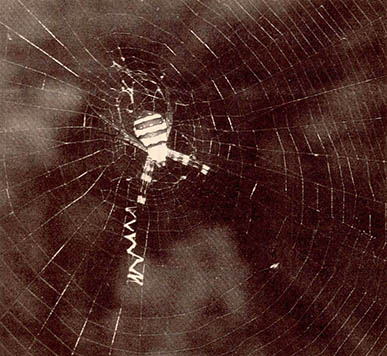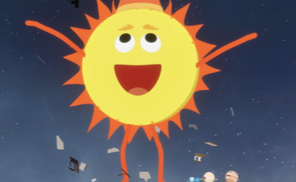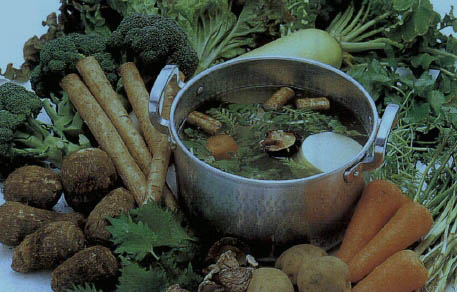거미는 고대로부터 존재해온 생물이다. 약4억년전, 데본기에 살았던 거미의 조상들은 마른 육지에서 걷기 시작한 최초의 생물중의 하나였다. 대부분의 거미들은 우리가 제발 없어져주었으면 하는 곤충들을 잡아먹기 때문에 인류에게 도움을 주기도 하고 또한 화이트가 지은 '살롯의 거미줄'이라는 재미있는 책이 있음에도 불구하고 많은 사람들은 거미를 좋아하지 않는다.
어떤 사람들은 심한 거미공포증에 시달리기도 하는데 어쩌면 이는 많은 공포영화들이 만들어낸 상황일 것이다. 독거미가 위험한 것은 사실이지만 피하는 사람들을 쫓아가진 않는다. 그리고 거미는 작다. 남부 이탈리아산(產)으로서 가장 큰 독거미인 타란튤라(새를 잡아먹을수도 있다)도 다리까지 포함해 26㎝(10.4인치) 이상 되지는 못한다.
동물중 오직 네 종류만이 진정한 '집 짓는'동물이며 이들은 거미 곤충 새 그리고 인간이다. 이중 인간은 지구역사상 가장 늦게 나타났으며 수천년 전 문명이 시작되기 전까지는 고작 초막같은 것만 짓고 살았다. 그러나 거미는 훨씬 오랫동안 바삐 집짓는 생활을 해왔다.
거미는 수도 많고 종류도 다양한 이어지는 다리와 딱딱한 표피를 지닌 절족동물문(門)에 속한다. 많은 절족동물은 아직도 처음 진화되었던 곳인 바다 속에서 살고 있다. 이중 게나 바다가재는 맛있다.
거미는 아라크니다(거미류) 강(綱)에 속하는데 이 이름은 그리스 신화로부터 유래된 것이다. 죽을 수밖에 없는 운명의 아라크네 라는 한 젊은 여인이 아테나여신과 베짜는 시합을 했다. 아라크네는 신들에 관한 이야기를 소재로 베를 짰는데 아테나가 자신이 짰다고 주장한 신들의 영웅적 이야기보다는 특히 비정상적인 사랑이야기를 담은 신들의 실수와 실패이야기에 치중했다. 아테나는 아라크네의 베를 망가뜨려 버렸다. 아라크네는 스스로 목메달아 자살했고 그후 거미가 되어 버렸다(거미는 가끔씩 자신이 친 거미줄에 매달려 죽은 듯 살아 있는 모습으로 발견된다).
거미류는 분절된 몸을 가지고 있으며 앞부분인 두흉부와 뒷부분인 복부에 네쌍의 다리가 있고 날개나 더듬이는 없다. 모든 거미류중에서 (전갈과 진드기 등을 포함한다) 거미는 가장 수도 많고 종류도 다양한데 약 4만여종이나 되며 이들 모두는 남을 약탈하는 포식생물이다.
거미에겐 흉부에 거미줄을 만드는 분비선이 있고 자신의 다리를 이용해 거미줄을 친다. 거미줄은 놀랍다. '피브로인'이라는 단백질로 만들어져 거미줄로 뽑혀 나오자마자 굳어지는데 물이 스며들지도 않고 나일론만큼 강하다. 최근에 영국의 생물학자인 도널드 에드몬드와 프리츠 볼라스는 핵자기공명 장치로 거미줄을 연구했다. 거미줄은 강하고 튼튼하다. 거미줄의 실은 잘 늘어나는데 이 신축성은 아마도 거미줄의 단단한 부분을 연결하는 '분자용수철' 때문인 것으로 보인다.
누에로부터 나오는 명주실처럼 거미줄을 가지고는 베를 짤 수 없지만 사람들은 이를 광학기구들을 만드는데 필요한 가는 선들로 이용할 수 있음을 찾아냈다. 다른 종류의 거미는 각각 다른 목적으로 자신의 거미줄을 이용한다. 어떤 거미들은 납작한자리를 만들어 터널을 나란히 세우거나 거미집의 구멍앞에 덫 목적의 거미줄을 쳐서 무엇인가 먹음직스러운 것이 지나가는지 신호용으로 사용하기도 한다. 또 다른 거미들은 나무 줄기나 가지 모퉁이에서 자주 보이듯이 약간은 지저분한 거미집을 회전시킨다. 그리고는 중심부를 두고 호(孤)모양의 줄을 치고 그 사이에 나선형으로 실을 매어 방사형 줄을 고정시킨다. 그 결과는 이슬과 함께 가끔 빛나보여 지나가는 사람을 즐겁게 해주기도 한다. 운좋은 사람이라면 불운한 곤충이 덫에 걸려 거미의 식사거리로 묶인 채 생사를 다투며 몸부림치는 장면을 목격할 수도 있다. 만약 사람이 거미집을 건드리면 거미는 안전을 확보하기 위해 줄에 매달린 채 수직으로 낙하한다.
둥근 모양을 한 거미종류는 많다. 필자가 가장 좋아하는 거미는 날개의 느슨한 비늘들을 벗어버림으로써 다른 거미집에서는 곧잘 탈출하는 나방을 붙잡는 거미다. 이 거미의 수평을 이루는 거미줄은 아래로 처진 실부분에 풀처럼 끈적끈적한 방울들이 크게 맺혀 있다. 나방은 바로 이 실부분에 붙으면 한쪽 실이 끊어지면서 거미가 이를 발견하고 잡으러 올 때까지 매달려 있게 된다.
거미는 호흡관 혹은 '허파책'로 숨쉬는데 여기에선 많은 양의 수분이 소요된다. 거미가 먹이를 구하러 나가면 목마를 땐 물을 재공급받을 수 있으나 어떤 거미들은 자기 집에서 물을 기다리기도 한다. 에드몬드와 볼라스는 매일 음식이 되고 또다시 집을 짓는 정원거미집을 관찰했다. 그 결과 거미줄의 습기를 흡수하는 표면이 공중으로부터 물을 흡수하고 후에 먹이를 섭취할 때 적절한 수분량을 채워넣음을 발견했다. 끊어지기 쉽고 살생적이며 아름답기도 한 거미줄로부터 발견한 새로운 사실이었다.

Spiders are ancient animals. Their Devonian period ancestors were some of the first creatures to walk on dry land, 400 million years ago. Most spiders serve us well by eating insects we'd rather not have around, but in spite of E. B. White's wonderful book, "Charlotte's Web," many humans don't appreciate spiders.
Some people suffer acutely from arachnophobia, fear of spiders — a condition catered to by several horror movies. While it is true that poisonous spiders can be dangerous, they don't go after people who try to avoid them. And spiders are small. Even the biggest tarantula (capable of capturing and eating a bird) is no larger than 26 centimeters(10.4 inches), including its legs.
Only four groups of animals are true "builders" — spiders, insects, birds and Homo sapiens sapiens. The latter came along late in Earth's history, building meager huts and such until they invented civilization, only a few thousand years ago. Spiders have been busy builders far longer.
Spiders are part of phylum Arthropoda, which embraces a huge number and variety of "joint — footed" creatures with hard outer skins. Many arthropods still live in the sea where they first evolved. Some of these, like crabs and lobsters, are delicious.
Spiders belong to the class Arachnida, a name taken from Greek mythology. A young mortal woman named Arachne tried to compete with the goddess Athena in a weaving contest Arachne wove stories about the gods — not their heroism, which Athena proclaimed in her own weaving — but their mistakes and their faults, especially their scandalous love affairs. Athena was not only angered by Arachne's daring, but jealous of her skill, so she destroyed her rival's daring, but jealous of her skill, so she destroyed her rival's weaving. Arachne hanged herself and was changed into a spider(creatures often seen hanging, much alive, on their own silk ropes).
Arachnids have a segmented arthropod body but it is divided into an anterior cephalothorax and a posterior abdomen, with four pairs of legs, no wings and no antennae. Of all the arachnids(Which include scorpions, mites and ticks), spiders are the most numerous and diverse, with 40,000 species, all predators.
Spiders possess abdominal glands to make silk that is drawn out by the spider's legs. Spider silk is remarkable — made of a protein called "fibroin" that hardens as it emerges, it is impervious to water and almost as strong as nylon Recently British biologists Donald Edmonds and Fritz Vollrath examined spider silk with nuclear magnetic resonance. The silk used in web building is strong and rigid That used for capture threads is more stretchable, its elasticity apparently from "molecular springs" that connect more rigid parts of the silk.
Spider silk can't be woven into cloth, like that produced by the silkworm, but humans do find a good use for it as hairlines in optical instruments. Different spiders use their own silk in different ways. Some make flat sheets of it to line their tunnels or put in front of the nest hole, with trip threads that will signal when something possibly edible is passing by. Other spiders spin the rather messy cobweds frequently seen in the corners of stems or branches. The spider then strings in radial lines with a central hub, and proceeds ot fill in with spiral threads that fix the radial ones in place. The result is frequently spangled with dew, giving a passing human much delight The human may be lucky enough to observe a life-and-death struggle going on as some hapless insect is trapped and tied up for the spider's future dinner. If the human touches the web, the spider is likely to plummet down to safety on a dragline.
There are many kinds of orb spiders. My favorite is the one that captures moths, which can escape other spider webs by shedding the loose scales on their wings. This spider's horizontal web contains big drops of a glue-like substance on limp capture threads. The moth sticks to the thread, which breaks at one end, dangling the stuck moth until the spider notices and comes in for the kill.
Spiders breathe air through their trachea and or "book lungs," which lose a lot of water. A spider that goes out in search of food can replenish its water when it is thirsty, but some spiders have to wait in their webs. Edmonds and Vollrath studied the garden-cross spider's webs, which are eaten and rebuilt each day. It was found that a hygroscopic coating on the web absorbs water from the atmosphere and when eaten by the spider, helps restore water balance. A newly discovered use for the fragile, deadly beauty of the spider's web!

















